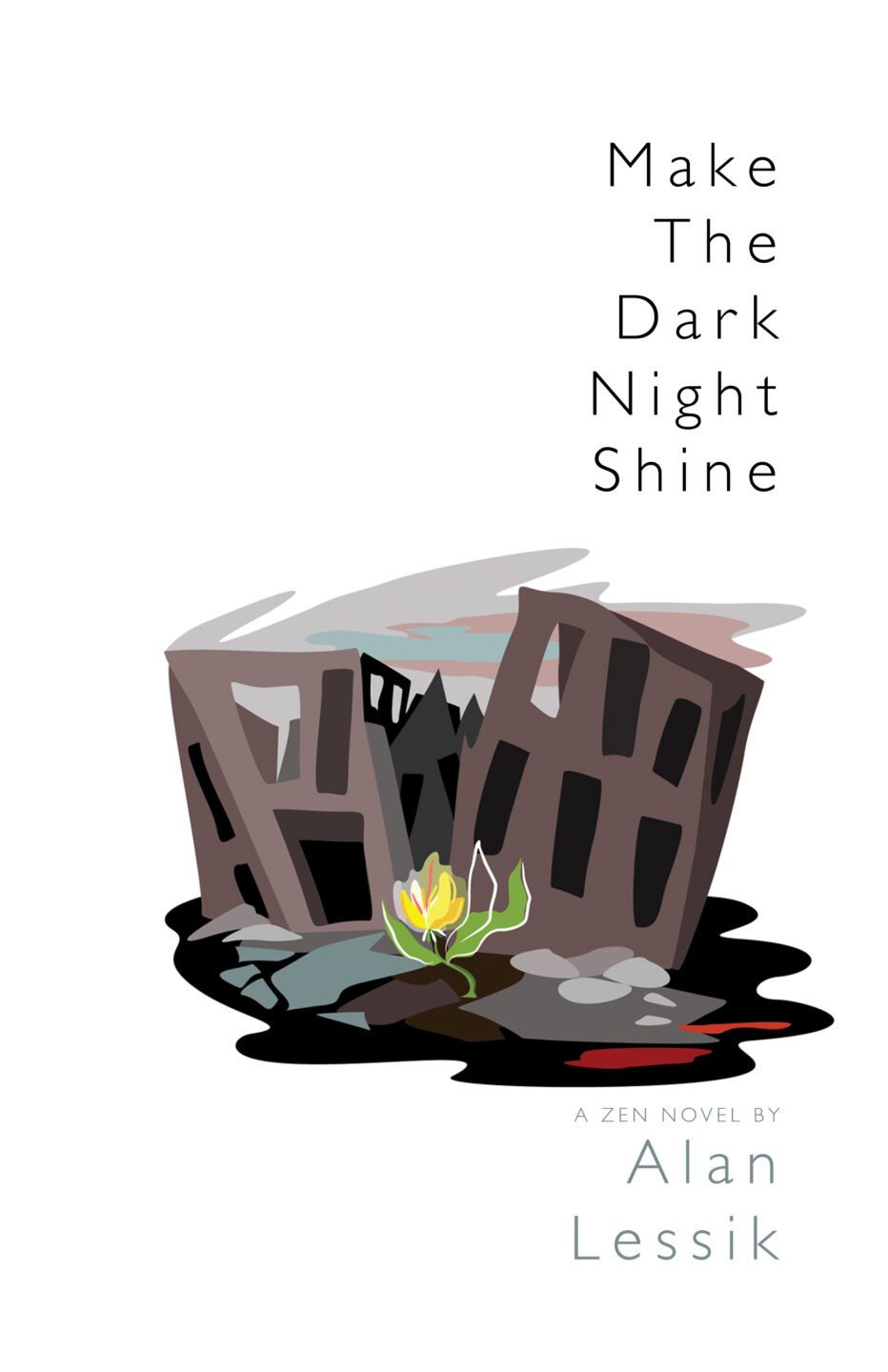The estranged son of a political father, Kenzo finds himself pushed right from university into a diplomatic career. He finds his few joys in the company of Mitsu, his fellow student and devoted lover. But over twenty difficult years in both Europe and Asia, Kenzo grows, changes, and experiences unforeseen types of deep heartbreak.
Alan Lessik’s MAKE THE DARK NIGHT SHINE explores a little-discussed period of global history, using the perspective of a gay Japanese diplomat. The book thus speaks from a strong narrative position, and there’s a lot to fascinate most readers: Kenzo travels from Japan to Constantinople to Venice to Paris, all the while connecting with gay men who have learned how to survive in societies that frown upon them. That remains true when the plot returns to Japan, and Kenzo watches his nation’s fall into militarism while simultaneously exploring the practice of Zen Buddhism. Few works sufficiently explore this tense, difficult home front, or the domestic human toll of Japanese imperialism. At times, the prose can feel stilted or over-written, and in the latter half a few punctuation errors begin to creep in (especially end punctuation for quotations), but the style overall is clear, thoughtful, and strong. A few moments of particular savor stand out, as when Kenzo recalls his first impressions of Paris: “Paris air was a mixture of sweet perfume, soot, marble, fresh bread and sophistication. Yes, sophistication has its particular smell—a mixture of tart, perky and louche.”
Although its strong prose style sufficiently evokes these times and places to keep the reader’s interest, MAKE THE DARK NIGHT SHINE often feels somewhat simplified. At times, this is a narrative necessity for a story covering two decades: when Kenzo must flee to Calais and cross the Channel as “but one of thousands of refugees trying to escape” the onrushing Nazi army, what could be a complex and thrilling episode is reduced to a three-sentence summary. But this novel also seems to soften certain harshnesses of the period; it makes no attempt, for instance, to realistically engage with the anti-Asian racism that existed in Europe at the time (and which even a diplomatic official like Kenzo could not avoid). Most disappointingly, though, the text elides much of the historical detail of different queer cultures (gay male culture in particular) across the early 20th-century world. For instance, much is made of shudō, an Edo-period tradition of same-sex love, and in a glossary this tradition is defined as “samurai same-sex relationships.” But historically, shudō never referred to relationships between peers like Kenzo and his lover Mitsu; it referred to age-differentiated relationships between adolescent boys and adult men. There are interesting cross-cultural patterns in the history of queer love—among them, in many contexts, specific distinctions between these hierarchical (age-differentiated) relationships and those between adult peers—but the book never takes any opportunities to explore these meaningful similarities and differences as Kenzo moves through the world.
Nonetheless, MAKE THE DARK NIGHT SHINE is not a history but a romance, and its romance remains poignant enough to carry a reader to the end.
Though it feels overly simplistic at times, Alan Lessik’s MAKE THE DARK NIGHT SHINE remains a captivating vision of humanity in the interbellum period.
~Dan Accardi for IndieReader


